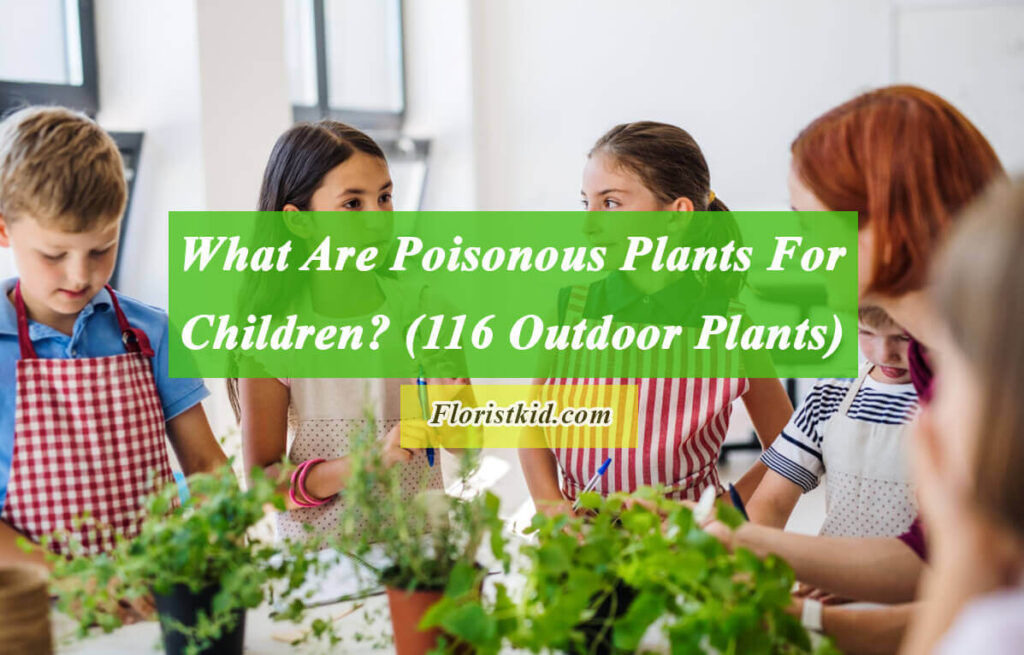Hydrangea (Hydrangea spp.), with its beautiful clusters of colorful blooms, has long been a popular choice among gardeners and floral enthusiasts. They are commonly found in gardens and serve as eye-catching ornamental plants. The flowers come in a wide array of colors, including blue, pink, purple, and white, making them very popular for floral arrangements. However, questions about their toxicity to humans and animals have raised concerns among some. This article aims to explore whether hydrangeas are poisonous to humans and animals and, if so, what precautions should be taken.
If you are interested in this topic, you can also read
<<Are Hibiscus Poisonous? >> and << Is Agapanthus Poisonous? >> articles.
Toxic Components Of Hydrangea
It is important to note that while hydrangeas are considered toxic, the severity of their toxicity can vary depending on the specific species of hydrangea, the plant part consumed, and the amount ingested. Ingestion of any part of a hydrangea plant should be avoided. If any symptoms occur after accidental ingestion, medical attention should be sought immediately. Here are the main toxic components found in hydrangea plants:
- Cyanogenic Glycosides: The primary concern regarding hydrangeas is the presence of cyanogenic glycosides, most commonly in the form of amygdalin. These compounds are also found in other plants, such as apples, peaches, and almonds, and in large quantities. Hydrangeas, particularly the Hydrangea macrophylla species, contain cyanogenic glycosides. Hydrangin is a cyanogenic glycoside specifically found in the roots of hydrangea plants. These compounds, when ingested in large amounts, can potentially release hydrogen cyanide, a highly toxic substance. The highest concentration of cyanogenic glycosides is found in the leaves and flowers of hydrangeas.
- Saponins: Hydrangeas may contain saponins, natural detergents that can be toxic to animals and humans when consumed in large amounts. Saponins can cause gastrointestinal irritation and, in severe cases, may even lead to poisoning.
- Oxalates: Like many other plants, hydrangeas contain oxalates, which are microscopic crystals present in the form of needle-like structures. Ingesting these crystals can lead to oral and gastrointestinal irritation, including symptoms such as mouth swelling, difficulty swallowing, and nausea [1, 2].
Are Hydrangeas Poisonous To Humans?
Yes, hydrangeas are poisonous to humans. The consumption of hydrangea blooms or ingestion of any part of the plant can pose a risk to humans. However, it is important to note that accidental ingestion is rare due to the plant’s bitter taste, which usually serves as a deterrent. Ingesting hydrangea can cause symptoms such as nausea, vomiting, stomach pain, dizziness, and diarrhea. In severe cases or with a large enough quantity, cyanide poisoning may occur, leading to more serious complications [3, 4, 5].
Precautions And Safety Measures
Despite the potential risks, it is essential to be proactive to ensure your safety and the safety of others when handling and growing hydrangeas:
- Awareness: Educate yourself and others about the potential dangers associated with hydrangeas. Share this information with children to prevent accidental ingestion.
- Safe Handling: When working with hydrangeas, it is advisable to wear gloves. This will prevent any irritation or allergic reactions caused by contact with the sap.
- Placement: Consider the placement of hydrangea plants, especially if you have children. Keep them out of reach, as prevention is key.
Are Hydrangeas Poisonous To Cats?
Yes, hydrangeas are poisonous to cats. While hydrangeas add beauty to our gardens and homes, it’s essential to consider the safety of our feline companions, as some plants can be toxic to cats. Here, we explore the potential toxicity of hydrangeas to cats and highlight the associated risks [6].
Symptoms Of Hydrangea Poisoning In Cats
If a cat consumes parts of a hydrangea plant, they may exhibit various symptoms, including:
- Gastrointestinal Distress: Cats may experience vomiting, diarrhea, or abdominal discomfort within a few hours after ingestion.
- Excessive Drooling: Increased salivation is a common sign of hydrangea poisoning in cats.
- Lethargy: Cats might become lethargic, weak, or uncoordinated due to the toxic effects of the plant.
- Depression And Loss Of Appetite: The cat may exhibit a decreased interest in food and appear depressed or disinterested in their surroundings.
- Difficulty Breathing: In severe cases or if a large amount of hydrangea plant material is ingested, cats may struggle to breathe properly.
Immediate Steps To Take
If you suspect your cat has ingested any part of a hydrangea plant or displays any of the symptoms mentioned above, it is crucial to take immediate action:
- Contact A Veterinarian: Call your veterinarian or a local emergency clinic to seek professional advice and guidance.
- Provide Information: Inform the veterinarian about the potential hydrangea poisoning, sharing details of the incident and the observed symptoms.
- Follow Professional Advice: The veterinarian may recommend inducing vomiting, administering activated charcoal, or other appropriate treatments based on the severity of the situation.
Prevention And Safety Measures
Prevention is the best approach to safeguarding your feline friend from potential toxicity. Here are some helpful tips:
- Keep Hydrangeas Out Of Reach: Place hydrangea plants in high or secured locations indoors or create barriers in your garden to prevent access.
- Know Your Plants: Familiarize yourself with the types of plants that are toxic to cats, and avoid having them in your home or garden if you are a cat owner.
- Educate Others: If you have friends or family who own cats, share this information with them to raise awareness and prevent potential accidents.
Are Hydrangeas Poisonous To Dogs?
Yes, hydrangeas are poisonous to dogs. For dog owners, it’s important to be aware that hydrangeas contain certain compounds that can be toxic to our furry friends. Here, we will explore whether hydrangeas can pose a threat to dogs and provide advice on how to keep our pets safe [7].
Symptoms Of Hydrangea Poisoning In Dogs
If a dog consumes any part of a hydrangea plant, symptoms of poisoning can occur. These symptoms may vary depending on the quantity consumed and the dog’s size, age, and overall health [8]. Here are some common signs to watch out for:
- Gastrointestinal Distress: Dogs may experience nausea, vomiting, diarrhea, and loss of appetite shortly after ingesting hydrangeas.
- Salivation and Drooling: Increased production of saliva and excessive drooling are also common symptoms of hydrangea poisoning.
- Weakness and Lethargy: Dogs may appear tired, weak, and less energetic than usual.
- Dehydration: Hydrangea ingestion could lead to increased thirst and reduced water intake, resulting in dehydration.
- Depression and Behavioral Changes: Some dogs may exhibit symptoms of depression, anxiety, or changes in behavior after consuming hydrangeas.
Severe Symptoms
In rare cases and with large ingestions, dogs may experience more severe symptoms, such as elevated heart rate, difficulty breathing, seizures, or even coma. If your dog shows any concerning symptoms or appears unwell after consuming hydrangea, seek immediate veterinary assistance [9].
Prevention And Safety Measures
Here are some preventive measures to protect your furry friend from hydrangea poisoning:
- Awareness: Familiarize yourself with the plants growing in your garden or yard, especially those that can be harmful to your pets.
- Restrict Access: If you have hydrangeas in your garden and your dog tends to nibble on plants, ensure they are not able to access or roam freely near these plants.
- Training and Supervision: Train your dog to avoid eating plants and reinforce commands like “leave it” to prevent any unwanted plant consumption.
- Consult A Veterinarian: If you suspect your dog has ingested hydrangeas or is displaying unusual symptoms, contact your veterinarian immediately.
Conclusion
While hydrangeas are undeniably beautiful flowering plants, it is important to be aware of the potential hazards they may pose to humans and animals. The presence of cyanogenic glycosides makes hydrangeas potentially poisonous, but the risk of accidental ingestion is relatively low due to their bitter taste.
By educating yourself and taking safety precautions, you can safely enjoy the beauty of hydrangeas without risking harm to yourself or others. By understanding the symptoms, taking immediate action, and implementing preventive measures, we can also help protect our pets and ensure a safe environment for them to thrive.












